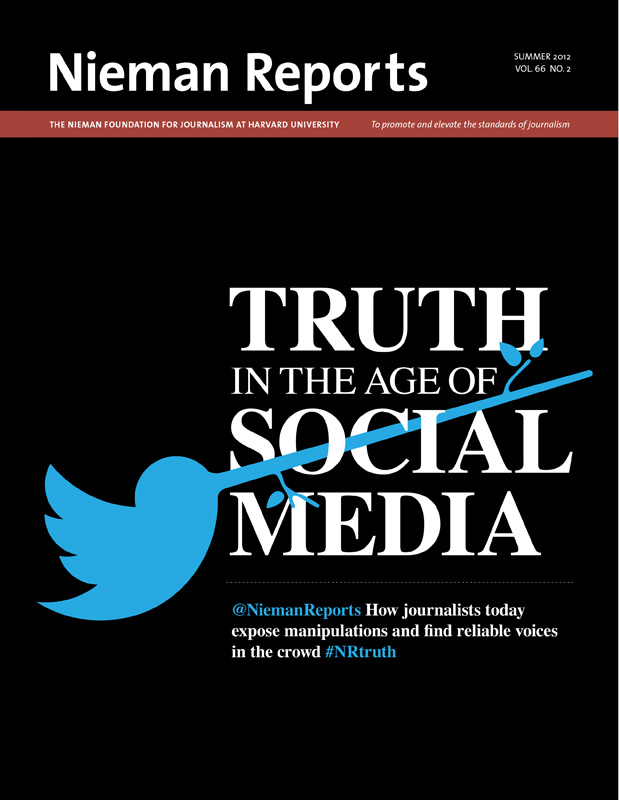Members of the BBC's User-Generated Content Hub offered tips for determining the veracity of videos and photographs:
Try to talk to the original source of the material. You will quickly form an instinctive feeling about whether the person is telling the truth. One caveat: It may not be possible or even desirable to talk to an activist whose life will be in danger if they are identified.
If material seems too good to be true, be skeptical—but keep an open mind. The famous shot of a woman jumping out of a burning building during last summer's London riots, neatly silhouetted against a raging inferno, initially aroused suspicions. However, the Hub verified it.
Try to determine where the material first appeared online. It could give clues about the identity and motives of the person who posted it.
Consult specialists. The BBC Monitoring Service can advise on accents. Use expert local knowledge of towns to advise whether images and videos depict the purported place.
RELATED ARTICLE
"Inside the BBC’s Verification Hub"
- David TurnerUse technology to help you. Examples include Google Earth (to confirm that the features of the alleged location match the photo) and TinEye. But do not do so at the expense of journalistic instinct. Not all the faked photos of the Osama bin Laden corpse could be disproved by technical means, but BBC verifiers decided nonetheless that no possible explanation of how a real photo had leaked was credible.
See what other verification experts are saying about an item on Twitter. They may have useful information or ideas.
Try to talk to the original source of the material. You will quickly form an instinctive feeling about whether the person is telling the truth. One caveat: It may not be possible or even desirable to talk to an activist whose life will be in danger if they are identified.
If material seems too good to be true, be skeptical—but keep an open mind. The famous shot of a woman jumping out of a burning building during last summer's London riots, neatly silhouetted against a raging inferno, initially aroused suspicions. However, the Hub verified it.
Try to determine where the material first appeared online. It could give clues about the identity and motives of the person who posted it.
Consult specialists. The BBC Monitoring Service can advise on accents. Use expert local knowledge of towns to advise whether images and videos depict the purported place.
RELATED ARTICLE
"Inside the BBC’s Verification Hub"
- David TurnerUse technology to help you. Examples include Google Earth (to confirm that the features of the alleged location match the photo) and TinEye. But do not do so at the expense of journalistic instinct. Not all the faked photos of the Osama bin Laden corpse could be disproved by technical means, but BBC verifiers decided nonetheless that no possible explanation of how a real photo had leaked was credible.
See what other verification experts are saying about an item on Twitter. They may have useful information or ideas.



